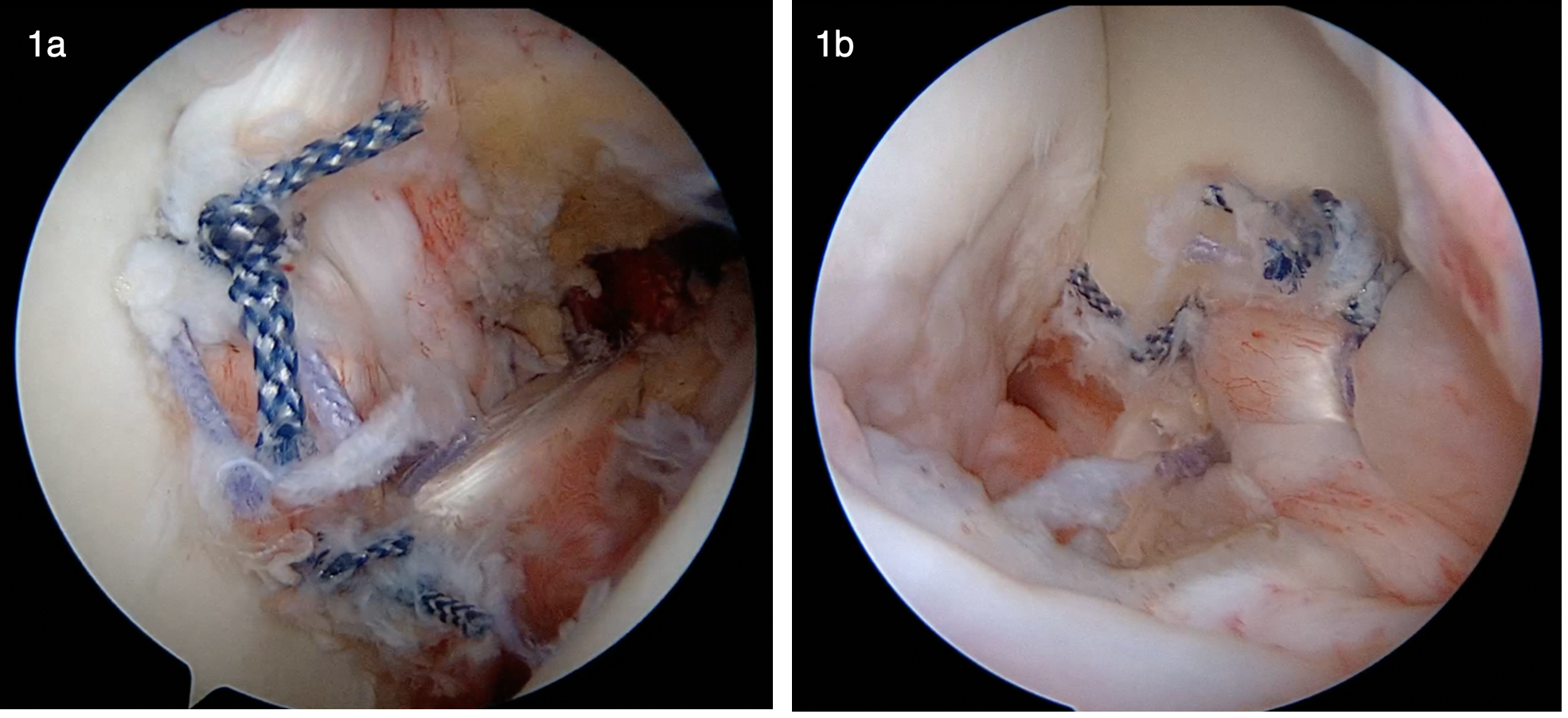Authors:
Jean Kany MD
Clinique de L’Union, Saint Jean, Francia.
Quentin Duerrinckx MD
Centre Hospitalier de Montauban, Francia.
Luis Alfredo Miranda MD *
Hospital Cima Hermosillo, Sonora, México.
* The main author declares that he has a conflict of interest with VIMS, FH Ortho
Introduction
Anterior shoulder instability has been a controversial topic due to the high recurrency and failure rate after Bankart repair. The Latarjet Procedure, despite excellent clinical results in case of bone loss, the complication rates are reported between 15 and 30%. Most of them related to coracoid graft and screws such as nonunion, osteolysis, anterior pain and arthritis.1
Painful anterior shoulder instability in young patients can be associated to SLAP Lesions and/or the proximal portion of the long head of the biceps. SLAP repair in young patients has a high failure rate. Tenotomy and tenodesis to the humerus of the long head of the biceps alleviates pain, muscle cramps, Popeye deformity and can help with forearm supination. The long-term effects of biomechanics in shoulder elevation after converting the long head of the biceps from biarticular to a monoarticular muscle.
As described by Collin and Lädermann 2017, DAS (Dynamic Anterior Stabilization) attempts to mimic the sling effect of the conjoint tendon with the long head of the biceps.2 An adjustable-loop device using a tunnel has also been described by Tang and Zhao in 2017 and recently by Garcia Jr et al.3,6 Milenin and Toussaint described a Labral Repair Augmentation with the proximal portion of the long head of the biceps in 2019 with knotless anchors4, as well as de Campos Azevedo and Ângelo in 2021 and 2023 with all suture anchors and double pulley technique.5
One of the main drawbacks of the previous techniques is the dissection of the long head of the biceps which is done at the level of the subscapularis in the suprapectoral area on most of the previous reports. Dissection of the transverse ligament in the bicipital pulley can damage the interconnection of the subscapularis and supraspinatus tendons.
The authors present a fully arthroscopic technique that find safe and reliable of Dynamic Anterior Stabilization without using interference screw or tunnel drilling in the anterior glenoid. The labrum is augmented utilizing the hanging biceps technique.
Surgical Technique
Viewing from the posterior portal, long head of biceps tenotomy and interval opening, and the subscapularis split is done through the anterolateral portal. The lateral part of the conjoined tendon is dissected from the clavipectoral fascia. Anteroinferior portal is done lateral to conjoined tendon. The inferior and middle suture anchors are inserted at 5 and 3 respectively. The long head of the biceps tendon is dissected with needle distal to the subscapularis and circumflex vessels and released from the bicipital groove at the level of pectoralis major tendon.
The biceps tendon is lasso-looped 3 to 4 cm distal to the proximal stump with a suture from the inferior anchor passing through the subscapularis split and stitched proximally with a free suture. The lasso loop is tied down and second suture of inferior anchor are tied down. The suture from the proximal stitching secured with a knotless anchor and inserted at 1 starting the hanging effect. The middle anchor with its two sutures are passed around hugging the bicipital tendon and knotted.
Discussion
The dissection should be done distal to the subscapularis and circumflex vessels at the level of the latissimus dorsi insertion in the floor of the bicipital groove.
The type of fixation in the glenoid is also important. Interference screws can create osteolysis and therefore bone loss in the anterior glenoid. Adjustable-loop devices using a tunnel can result in a possible neurologic lesion if surgeon does not drill hole parallel to glenoid equator.
The “bungee-cord” and “windshield wiper” effects haven´t been studied yet, as well as the creep of the long head of the biceps graft leading to elongation. All these are graft complications related to adjustable-loop devices.
Conclusion
Dynamic anterior stabilization with labral augmentation using this technique could improve long term follow-ups by diminishing damage to the distal rotator cuff insertions and possibly preventing glenoid bone stock loss.
Supplementary Material
Figure 1: Arthroscopic final view

1a: Posterior view; 1b: Anterolateral view
References:
-
Gupta A, Delaney R, Petkin K, Lafosse L. Complications of the Latarjet procedure. Curr Rev Musculoskelet Med. 2015;8(1):59-66. https://doi.org/10.1007/s12178-015-9258-y
-
Collin P, Ladermann A. Dynamic anterior stabilization using the long head of the biceps for anteroinferior glenohumeral instability. Arthrosc Tech 2018;7:e39-e44. https://doi.org/10.1016/j.eats.2017.08.049
-
Tang J, Zhao J. Arthroscopic transfer of the long head of the biceps brachi for anterior shoulder instability. Arthrosc Tech 2017;6:e1911-e1917. http://dx.doi.org/10.1016/j.eats.2017.07.009
-
Milenin O, Toussaint B. Labral repair augmentation by labroplasty and simultaneous trans-subscapular transposition of the long head of the biceps. Arthrosc Tech 2019;8:e507-e512. https://doi.org/10.1016/j.eats.2019.01.010
-
de Campos Azevedo C, Ângelo AC. Dynamic Anterior Stabilization of the Shoulder: Onlay Biceps Transfer to the Anterior Glenoid Using the Double Double-Pulley Technique. Arthrosc Tech 2023;12:e1097-e1106. https://doi.org/10.1016/j.eats.2023.02.048
-
Garcia JC, Mendes RB, Muzy PC, de Paiva Raffaelli M, Dumans e Mello MB. Dynamic anterior stabilization of the shoulder with adjustable-loop device. Arthrosc Tech 2022;12:e39-e44. https://doi.org/10.1016/j.eats.2022.08.055
Download PDF version

